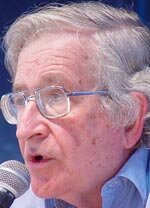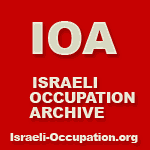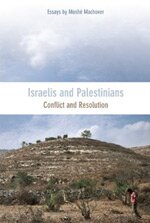By Irene Gendzier, ZNet – 23 January 2009
http://www.zcommunications.org/znet/viewArticle/20342
The PR war being waged by Israel over coverage of its invasion of Gaza is a critical part of maintaining the US public, if not the US government, in a state of maximal ignorance and above all, indifference, to the meaning of what is taking place in Gaza.
There is nothing new about such PR efforts. directed at the U.S. with the tacit understanding that Washington’s support is critical to Israel’s permanent war against the Palestinians. From Washington’s perspective, irrespective of the administration in power, Tel Aviv has played a critical role in the protection of US interests in the Middle East, with the tacit collaboration of Washington’s reactionary Arab allies. In this context, the fate of the 1.5 million residents of Gaza, as that of Palestinians in the West Bank, is and has long been, entirely expendable. Whether it is the PLO, Fatah, Hamas, or others who have operated in the ranks of Palestinian politics, the view from Washington has been consistent and compatible with that of Israel. Thus, to the extent that Palestinians are perceived as resistant to US or Israeli policy, they are considered suspect, and in the case of organized parties or movements, intolerable, as in the case of Hamas and the prospect of its survival and influence beyond Gaza.
But the PR war being waged over Israel’s crushing campaign in Gaza is directed at another front, a popular front whose support Washington has also coveted and corrupted in the conduct of its Middle East policies. The systematic deception concerning US policy in Iraq put over on the US public, or at least a substantial part of it, is by now well known. The same cannot be said about US policy on Israel/Palestine, a well protected enterprise that persists with great effort. Hence the importance of the Israeli PR war to make sure that the American public remains immune to the latest phase in the war against Palestine, that it remain blind and deaf and above all, distant and detached from the quaking of that earth.
The control of such information in the age of the internet, however, has become virtually impossible. Graphic evidence of what this total war has meant for the Gaza ‘strip’ that is stripped of any means of survival, defies the ban on knowing. The wordless images of death at the hands of weapons of mass destruction are no longer hidden. Nor is the defiant violation of law, whether national or international kept behind raps. On the contrary, its very openness is an invitation to complicity, or an incitement to rejection borne of an intolerable revulsion as Gaza has come to evoke Guernica, Hiroshima, the Warsaw Ghetto, the forbidden references now current.
Many have pointed out that the Israeli invasion of Gaza bears a highly disturbing resemblance to the massive expulsion of Palestinians in 1948. Some 700,000-800,000 people were dispossessed from their homes as a result of policies pursued by the military forces of what became the state of Israel in May 1948. US policymakers then were fully aware of the origins and likely consequences of what became the Palestine refugee problem. Their responses are part of the documentary record that is, unfortunately, little known today. Yet however significant the major regional and international changes that have occurred in the intervening years, there is an undeniable connection between the traumatic developments of that period and those taking place in the West Bank and, notoriously, in Gaza today. That US officials were fully apprised of the origins of the Palestine refugee problem remains important, that they chose to set it aside and to reward the emergent Israeli state for its ability to violate border agreements and expel the native population of Palestine without incurring effective regional or international challenge, was indicative of Washington’s calculations. Those went considerably beyond Palestine.
In 1948 as now, Washington concluded that it had a stake in the outcome of the Palestinian struggle that was inseparable from its interests in the region. It was not Hamas that Washington worried about in 1948, but the prospect of an independent Palestinian state as envisioned in the 1947 UN Partition Plan. Therein lies their preference for the enhanced role of Transjordan in taking over what remained of Palestine, which was the new state of Israel’s preferred policy as well.
There was no question then about what would later be described as the demographic transformation of Palestine in the period extending from the UN Partition Resolution of November 29, 1947 to Israel’s declaration of independence on May 14, 1948 and continuing through the 1949 armistice agreements. Israel’s expansion and consolidation of territory beyond that allotted by the UN Partition Plan elicited opposition in Palestine and beyond, offending British officials and some among their US colleagues. But it quickly became clear that Washington was prepared to legitimize Israel’s expansion and support its admission to the UN and then, as now, to accept its resistance to final settlement, lest that involve unacceptable compromise.
US officials were also well aware of the military inferiority of Palestinian and Arab forces as compared to those of the Hagana, the Irgun and the Stern Gang in 1948. US officials, moreover, were witness to the flight and expulsion of Palestinians which they duly recorded in their cables to Washington.
At 5pm on April 13, 1948, the US Consul at Jerusalem (Wasson) cabled the US Secretary of State with the following confidential message:
“Early morning April 9 combined force Irgun and Stern Gang numbering over 100 attacked Arab village, Deir Yasin, several miles west Jerusalem. Attackers killed 250 persons of whom half, by their own admission to American correspondents, were women and children. Attack carried out in connection battle now still in progress between Arabs Jews on roads leading to Jerusalem from Tel Aviv.”[1]
“We believe,” continued Wasson, “chance for cease-fire and truce increasingly remote. With growing criticism in Irgun and Stern Gang circles over Haganah leadership further attacks this nature can be expected and Arabs will react violently.”
At the end of April it was Haifa, where the mass exodus had begun the previous winter. This time it was Aubrey Lippincott, US Consul at Haifa, who reported on the continued flight and expulsion of Arabs, describing “Arab areas now being evacuated after Arabs refuse meet Haganah truce team which reportedly call for complete surrender arms, equipment, all food supplied, deportation ‘foreign’ Arabs, and surrender to Jews of all former Nazis.”[2] And as Lippincott continued, “Arab families west of Haifa with two thousand women and children reported fled to Acre by sea…. Haifa now undoubtedly completely Jew controlled….” Lippincott continued: “Arab leaders and men proved poor and totally inadequate deal with forces. Survivors claim British prevented seven hundred reinforcements from entering city during battle also claim Abdullah promised help which British also stopped. Arab forces entirely dispersed. Leaders reportedly left before battle occurred.” As to the residents of Haifa who remained, they were obliged to acquire identity cards and “must swear allegiance to Israel state,” Lippincott reported.
In June, the US consul reported that he had learned from the Honorary Spanish Vice Consul who was also a US citizen: “1. All Arabs who remained Haifa being thoroughly screened by Jewish authorities, required obtain identity cards and must swear allegiance to Israel state. 2. Arabs who return Haifa are considered illegals. Of these Jews are permitting only those to remain whom they consider satisfactory after thorough investigation. These also required take oath allegiance Jewish state. Result is remaining Arabs determined leave.”[3] The Honorary Vice Consul of Spain was assisting in departures.
On May 13, the eve of Israel’s declaration of independence, it was the turn of Jaffa. This time the account of what occurred was transmitted through the US Minister in Beirut, Lowell C. Pinkerton. In April 1949 he submitted a package containing a long Memorandum to the US Government written by the representatives of the Jaffa and District Inhabitants Council exiled in Beirut.
What did Pinkerton make of his submission? He surely read the Memorandum whose opening paragraph was utterly straightforward:
“First we would draw the attention of the Government of the United States to the following important fact: namely, that the conflict did not originally include or involve such a question as the return of refugees; the population itself never envisaged such a possibility. On the one hand, a large number of people did not leave their homes voluntarily, but were expelled by order of the Jewish commanders when they entered their towns and villages (Ramleh and Lydda), and were prevented from taking any of their belongings with them. On the other hand, the conditions which prevailed shortly before the termination of the Mandate rendered it impossible for a large section of the people to remain in homes and lands. For, that would have meant the destruction of a large number of them, since they did not possess arms with which to defend themselves. The majority of them believed that the matter would be settled politically, not imagining for a moment that things would reach the stage of open and general war. They, as law-abiding civilians, had therefore failed to equip themselves with arms and ammunition even for self-defense. Many, too, placing their trust in the United Nations could not believe they would be left defenceless and helpless against attack. But all of a sudden, the people were faced with imminent danger to their lives and property, and they had no alternative but to take the drastic step of fleeing for the nearest refuge. Most of them made for the neighboring countries, where they found a sympathetic welcome as refugees. But legally speaking, they were (and still are) considered as aliens in these countries, and all the laws and rules that apply to foreigners applied to them as Palestinians.”
But Pinkerton also had before him a copy of the surrender agreement dated May 13, 1948, that was signed by the Emergency Committee of Jaffa, which opened with the following warning: “Any shot fired at a Jewish area or at a Jew or at any member of the Hagana, or any resistance to them, will be sufficient reason for the Hagana to open fire at the Offender.”[4]
And then there was directive number 4:
“All males in the area defined in the Agreement will concentrate in the area between Feisal Street, Al Mukhtar Street, Al Hulwa Street and the Sea until every body has identified himself under arrangements, the particulars of which will be notified later.
“During this time, any male found outside this area will be severely punished, unless in possession of a special permit.”
Of the 50,000 Arab residents of Jaffa in this period, 15,000 remained, only to be subjected to widespread vandalism and violence. Within weeks of the Hagana’s take-over of Jaffa on May 14, 1948, the population was reduced to 3,000.
From Jerusalem, US Consul William C. Burdett, who replaced Thomas Wasson, who was assassinated on May 23, 1948, cabled the Secretary of State on July 6, 1949, describing Palestinian refugees in terms of “despondency, misery, lack of hope and faith,” with the “destruction of former standards of values,” rendering them apt victims of communist propaganda.[5] Burdett continued, predicting that Israel “has no intention of allowing the return of any appreciable number of refugees except, perhaps, in return for additional territory….Arab houses and villages, including those in areas not given Israel by the partition decision, have been occupied to a large extent by new immigrants. Others have been deliberately destroyed. There is practically no room left. Arab quarters in Jerusalem, until recently a military zone, are now almost full and new immigrants are pouring in steadily.”[6] And as Burdett concluded, “Israel eventually intends to obtain all of Palestine, but barring unexpected opportunities or internal crises will accomplish this objective gradually and without the use of force in the immediate future.”
It was not only the Wassons, Lippincotts, Burdetts or Pinkertons who were in possession of such evidence. US officials in Washington had the same information. The US President, who had called for investigations of European Displaced Persons and insisted that 100,000 DPs be allowed to emigrate to Palestine, now faced Israel’s denial of its own responsibility for the expulsion and flight of Palestinian refugees. The Israeli response became — and remains — the accepted formula in conventional accounts of the conflict.
“The Government of Israel must disclaim any responsibility for the creation of this problem. The charge that these Arabs were forcibly driven out by Israel authorities is wholly false; on the contrary, everything possible was done to prevent an exodus which was a direct result of the folly of the Arab states in organizing and launching a war of aggression against Israel. The impulse of the Arab civilian population to migrate from war areas, in order to avoid being involved in the hostilities, was deliberately fostered by Arab leaders for political motives. They did not wish the Arab population to continue to lead a peaceful existence in Jewish areas, and they wished to exploit the exodus as a propaganda weapon in surrounding Arab countries and in the outside world. This inhuman policy has now faced the governments concerned with practical problems for which they must assume full responsibility.”[7]
The response of US officials who were deeply familiar with the course of Israeli policies was one of barely restrained bitterness as they contemplated the condition of Palestinian refugees and the future of what some described as a guerrilla war. Truman himself gave repeated signs of his frustration on the matter, as did State Department officials and US oil interests concerned with the overall impact of US policy. But there were other lines of policy evolving, those that viewed the new state’s military capacity as a potentially important asset for US policy in the region.
It was in the same month in which the above declaration was made on the question of Palestinian refugees by Israel, that another kind of review was under way. This one came from the Acting U.S. Representative to the U.N., Philip Jessup, who wanted a clarification of US policy on Palestine prior to the UN’s sending out its mediator, Bernadotte, to the region. As Jessup wrote, “although presumably the mediator will exercise a free hand, it is clear that the views of the United States will exercise a strong if not controlling influence on what is ultimately recommended or accepted.”[8] What was also clear, as Jessup insisted in a later statement was that “our interests in the area will continue for an indefinite period…”[9]
Jessup then proceeded to outline his view of U.S. interests in Palestine which centered on his assessment of Israel’s impressive military and political capacity, leading Jessup to support Israel’s territorial expansion beyond the boundaries allotted in the 1947 Partition Plan, along with its demands for UN admission. And along the same vein, Jessup supported Israel’s collaboration with Abdullah of Transjordan as a solution to the Palestine problem. As the US representative affirmed, “there will be a State of Israel;” and “there must also be an Arab State in Palestine,”[10] but Jessup failed to indicate who would control that state. Was it to be a Palestinian state controlled by Palestinians or one under the rule of Abdullah. What emerged from US sources was the latter.
Finally, there was the question of how Palestine/ Israel fit in US Middle East policy.
Jessup’s explanation was straightforward:
“From the strategic viewpoint we assume that Palestine, together with the neighboring countries is a major factor presumably in any future major conflict this region would be of vital importance to US as a potential base area and with respect to our lines of communication. Presumably also the oil resources of the area are considered vital. It is our feeling that this last point may not perhaps have been dealt with adequately and frankly enough in official and public discussion of the Palestine question.
“From the economic viewpoint it is probable that with the exception of oil our trade and other economic relations with Palestine and the other Near East countries are not directly of any substantial importance. Indirectly, however, the economic stability and developing prosperity of Palestine and the Middle East under peaceful conditions could make a very substantial contribution to the economic recovery of the world generally and thus contribute to the economic welfare of the U.S. With respect to oil, we recognize that the oil supply from the area if of great importance in the European recovery program. Were it not for this factor, however, and the strategic importance of oil, we should probably not allow the economic importance of this commodity to condition our judgment substantially with regard to Palestine.”[11]
Was Jessup alluding to those US officials who were persuaded of the urgency of ‘conditioning’ US policy on Palestine precisely because they believed that support of partition and statehood for Israel would place US oil interests at risk? Was he referring to those dealing with US oil policy who understood that such risks were effectively contained by the combination of the Saudi reluctance to break with US oil interests and the allied weakness of Arab regimes? Or was Jessup’s concluding statement an unmistakable sign that he understood, as did the US military, that Israel was a promising asset in US strategic planning designed to guarantee US access and protection to Middle East oil?
It is useful to recall that by the spring of 1949 the US military, having reevaluated its prior position on Israel concluded that the nascent Israeli state with its, “small artificial harbor at Haifa, and an excellent although limited system of well-developed airfields and air bases,” would be an asset to US Middle East policy.
CIA analysts were not as positive, warning of guerrilla war and an Israeli state permanently dependent on external support.
That was 1949. What of 2009? With all due recognition of the importance of not collapsing history or minimizing the significant changes that have transpired in the intervening years, remembering the earlier period is critical to an understanding of the foundations of the present conflict, including the role played by the US in the service of its interests.
Gaza in 2009 remains the mirror of 1948, a year in which it was utterly transformed as a result of the influx of Palestinian refugees. However altered by its political evolution and attendant frustrations and divisions, Gaza’s internal history is a chapter in the Palestinian struggle which is inseparable from the continuing Israeli-Palestinian conflict in which, as Jessup wrote earlier, the U.S. exercises “a strong if not controlling influence,” and, as the Acting US Representative to the UN added, “our interests in the area will continue for an indefinite period….”
The crisis in Gaza is, thus far, contained within its perimeters, or at least its military dimension is so confined. But this cannot be said of its political impact which may prove to be no less savage. That the West Bank is directly affected, if not indirectly targeted, is evident, but the effect of the Gazan campaign extends to every Arab country that has been placed on notice, as a result. And it is not only the Arab states that are so affected.
The ‘lessons’ of Gaza will not be easily dispelled. What they reveal with a ferocity approved by the U.S. and carried out with due deliberation by its mightily militarized ally is that the campaign justified in the name of security is, in reality, a war waged without bounds against the ‘wretched of the earth.’
Notes
[1] April 13, 1948, The Consul at Jerusalem (Wasson) to the Secretary of State, Foreign Relations of the United States (FRUS) 1948, Vol. V, part 2, p. 817.
[2] April 24, 1948, Lippincott, Haifa to Secretary of State, included in The Palestine Reference Files of Dean Rusk and Robert McClintock, 1947-1949, Record Group 59, National Archives and Records Service, General Services Administration, Washington 1981, Reel 10, no. 8955.
[3] June 23, 1948, The Consul at Haifa (Lippincott) to the Secretary of State, FRUS, 1948, V, part 2, p. 1138.
[4] Agreement between The Commander of the Hagana, Tel-Aviv District and the Palestinian members of the Jaffa Emergency Committee on May 13. 1948, included as an attachment to a Memorandum submitted by “The Jaffa and District Inhabitants Council,” forwarded to the US Secretary State by Lowell C. Pinkerton, American Minister, American Legation, Beirut, April 11, 1949, Cable No.65, in State Department Central Files on Lebanon, 1945-1949, RG 59 890E.00/4-1149.
[5] July 6, 1949, The Consul at Jerusalem (Burdett) to the Secretary of State, FRUS, 1949, VI, p. 1204.
[6] Ibid., p. 1205.
[7] July 27, 1948, The Acting United States Representative at the United Nations (Jessup) to the Secretary of State, FRUS, 1948, V, part 2, p. 1248.
[8] June 2, 1948, Memorandum by the Deputy United States Representative on the Security Council (Jessup) to the United States Representative at the United Nations (Austin), FRUS, 1948, V, part 2, p. 1088.
[9] July 1, 1948, The Acting United States Representative at the United Nations (Jessup) to the Secretary of State, FRUS, 1948, V, part 2, p. 1181.
[10] June 2, 1948, Memorandum by Jessup, op. cit., p. 1089.
[11] July 1, 1948, Jessup to Secretary of State, op. cit, p. 1181.
Irene Gendzier is Professor in the Department of Political Science, Boston University. She is the author of Notes From the Minefield: United States Intervention in Lebanon and the Middle East, 1945-1958 (Columbia University Press, 1997, 2006), co-editor with Richard Falk and Robert J. Lifton, Crimes of War: Iraq (Nation Books, 2006) to which she contributed the essay, “Democracy, Deception, and the Arms Trade: The U.S., Iraq, and Weapons of Mass Destruction”; she is also the author of “The Risk of Knowing,” in Edward J. Carvalho, ed., Works and Days, special issue on Academic Freedom, vols. 26-27, 2008-9. She is currently completing a study of the foundations of U.S. foreign policy in the Middle East in the period, 1945-1949, entitled Dying to Forget: The Foundations of U.S. Policy in the Middle East, to be published by Columbia University Press.
























